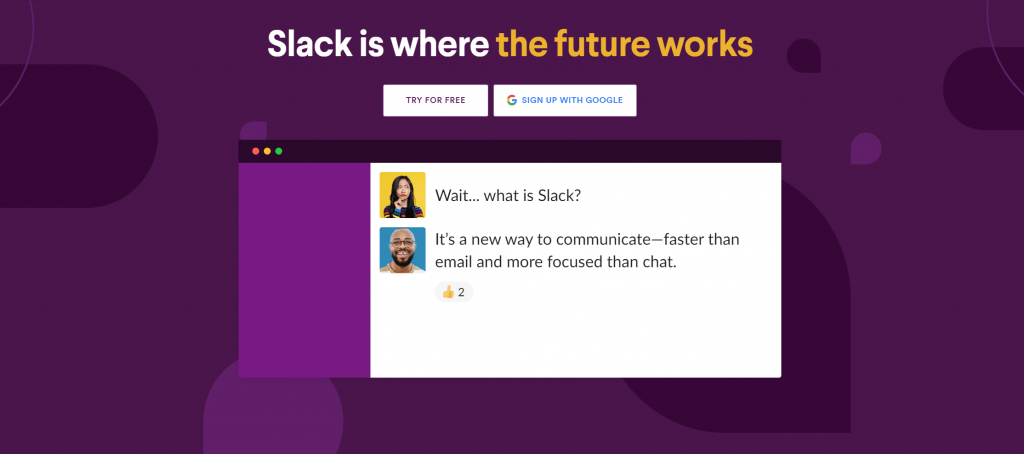January 8, 2024
Should You Provide a Work From Home Stipend? [Guide for Businesses in 2024]
Do you provide a work from home stipend for your remote employees? If not, perhaps you should. Between 2005 a...

More and more companies are choosing to ditch the office, in favor of remote work. Yet a lot of traditionalists have concerns about how communication can work in a location-independent workplace.
The answer to that concern is asynchronous communication (sometimes shortened to “async”): a relatively new way to communicate, different to what we’re used to in traditional office settings. This communication style not only addresses those who have concerns about how to interact in a remote business, it may also lead to a more efficient and productive workplace overall.
Asynchronous communication is not unique to remote work, and it’s not always used in remote workplaces. But evidence shows that businesses – remote or otherwise – are better off making the majority of their communication asynchronous in nature.
Read on as we explain all you need to know about asynchronous communication and how it can work for your company.
Related: Over 50 fascinating Remote Work Statistics to know in 2024.
Asynchronous communication means communicating in a way that doesn’t require an immediate response.
For example, one person sends another a memo. The other person responds several hours later.
It’s asynchronous because the people communicating do not need to be synced to the same schedule. This communication style has a number of advantages, most notably the fact that conversations become less of a disruption, as parties can respond only when it suits them.
Here are some forms of communication that can be classified as asynchronous:
With all these examples, there is no requirement that everyone be in sync and taking part in the conversation at the same time. You can come back to an email, or a message on Slack and reply at any time.
Here are a few examples of synchronous communication:
These types of communication require people to be present (either in person, or via online/phone chat) at the same time.
Asynchronous communication offers a lot of benefits in the workplace. It’s a more flexible communication style that allows for a greater focus on productive deep work. Communication is also usually more in-depth, and more efficient.
It’s worth mentioning that, while asynchronous communication is almost always linked with remote work, it holds the same benefits for workers in an office environment. Similarly, remote teams often lean too hard on synchronous communication, missing out on the advantages of adopting an async-first workplace.
Here are the most notable benefits of asynchronous communication:
The best way to kill productivity is people constantly stopping in for a chat. Whether it’s work-related or not, these small chats kill any chance of getting deep, focused work done.
We get our best work done when we’re able to slip into this “deep work” state. It’s also commonly referred to as the “flow state”. It’s when everything is clicking, and you’re making progress on your task almost subconsciously.
Each time an interruption comes up, you’re kicked out of the flow state. It’s not as easy as just pausing and picking up where you left off. It often takes some time before you can get that momentum back – if at all.
The tasks we do in these “deep work” blocks are usually the most important and valuable tasks. Thus it can make a huge difference when there are fewer interruptions, and staff are free to dedicate more focus to singular tasks.
Asynchronous communication allows your workplace to be a lot more flexible. You don’t need people in the same place, or online at the same time, freeing up employees to work when and where they want.
Staff are likely to be happier because of this, and thus more productive. The business can also hire from a wider talent pool when async is the norm, since you’re not limited to the area around the workplace.
You know the feeling when you come up with the perfect thing to say, just a little too late? Like when you’re driving home, or later on in the shower?
It’s hard to come up with the right response straight away. In a face to face chat or a call, we often forget to mention certain points, or come up with valuable insights once the conversation has already finished. We may also feel pressured to give a solution straight away, which can lead to knee-jerk solutions that create more problems than they solve.
Asynchronous communication styles let you take time and respond with a high quality, fully thought-out message.
Similarly, real-time conversations can get emotional. Particularly when you’re discussing delicate subjects, or the topic has to do with someone’s performance. We can end up saying something we regret in the heat of the moment.
A delayed response gives us time to step back, separate emotion from the situation, and respond professionally. This leads to higher quality conversations and a more harmonious work environment.
With asynchronous communication, generally everything is written down or recorded. This means we can go back and review a conversation if there is something we’ve forgotten, or we need to refer back to someone’s instructions.
Remember the Seinfeld episode when George is given a project, but missed out on the details when his boss went into the bathroom? If this was a Slack message or an email, the details would be there for him to look at any time he wanted.
Documented conversations means increased transparency. No “he said she said”, fewer miscommunications, when we can refer back to the exact words someone used. It’s a higher quality, less stressful style of communication that often works best in a professional setting.
Trending Article: Presenteeism: The $150 Billion Problem for Today’s Workforce
While we go on about the benefits of asynchronous communication, there is still a place for meetings, calls and face to face meetings.
There’s a human element about synchronous communication, which is valuable, at least some of the time. Real-time conversations can help us evolve our ideas and get through large amounts of information (such as a weekly or monthly update) more quickly.
Some people are also more comfortable communicating like this as well, particularly for non-work related conversations, like watercooler chats (even if it’s a virtual watercooler).
Synchronous communication certainly has its place, whether it’s for weekly or monthly meetings, or simply a way to maintain mental health and a sense of community in a remote workplace. So don’t feel like you need to move every part of your business to async.
Here are a few tools that make asynchronous communication a lot easier and more effective.

Virtual workplaces like Slack and Microsoft Teams are at the heart of asynchronous communication. They allow conversations that don’t disrupt work, either through channels related to specific topics, or private message threads between 2 or more people.
Better yet, these tools enable synchronous communication (or close to it) if the situation calls for it, or if it doesn’t interrupt the workflow of the conversation’s participants.
Further reading: Fascinating Slack Statistics that show just how the platform is powering 21st century workplaces.
While email is becoming increasingly outdated for communication within the workplace, thanks to tools like Slack and Teams, it remains a core tool for asynchronous communication. When you send someone an email, there’s no necessity for them to reply immediately. They can check their email and reply when it fits into their workflow, or when they’ve had time to fully consider their response.
The advantage of Slack/Teams is that these tools allow you to better organize message threads, and makes it easier creating asynchronous conversations that involve a whole team, rather than just one or two people.
Related: Top Slack Hacks to Improve Your Workflow and Productivity
More vital tools in asynchronous workplaces are project management tools like Trello, Monday and Asana. These are great for project-specific communication, where multiple people can collaborate without the need for real-time meetings or calls, which can often be a drain on productivity.

Similar to what we said above, Google Workspace tools (formerly known as G Suite) let your team collaborate on projects in an asynchronous manner. With Google Docs, Sheets or Slides, your team can comment on or add to projects, with other team members able to pick up on the comment thread only when it suits them. Oftentimes a simple comment or suggestion on a Google Doc can fully replace the need for an in-person chat or meeting.
Loom is another valuable tool for the asynchronous workplace. Sometimes a typed message doesn’t cut it. Perhaps it’s hard to communicate what you want to say in a few sentences, or you want to combine your message with a screencast. That’s where video tools like Loom come in – you can record a video, send it to your team, and they can reply (if necessary) when they have the chance.
A simple loom video – or one with another tool, such as Bubbles or Soapbox – can easily replace 90% of synchronous meetings or collaboration sessions.
Everything evolves over time, and we’re currently seeing the evolution of work from the traditional office-based, synchronous model, to a more efficient one.
The future of work (and indeed the present for many companies) is heavily linked with asynchronous communication and collaboration. It allows more time for deep work and more flexible workplaces, with happier staff from a wider talent pool.
That’s certainly not to say there is no room whatsoever for synchronous communication. Meetings and chats can certainly be productive. And then there’s the social element of synchronous communication, which is valuable in itself.
If you’re not yet using asynchronous communication in your workplace, now’s the time to start experimenting. Even if your company is based in an office, start giving your team the tools to communicate only when it fits their workflow.
Flamingo makes managing your team’s paid time off a breeze.